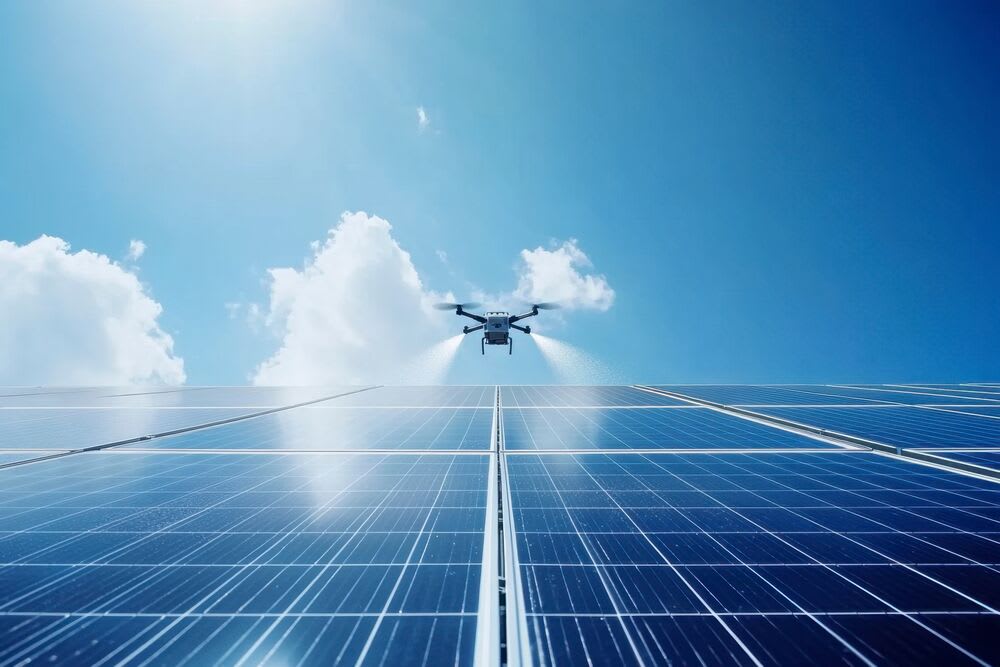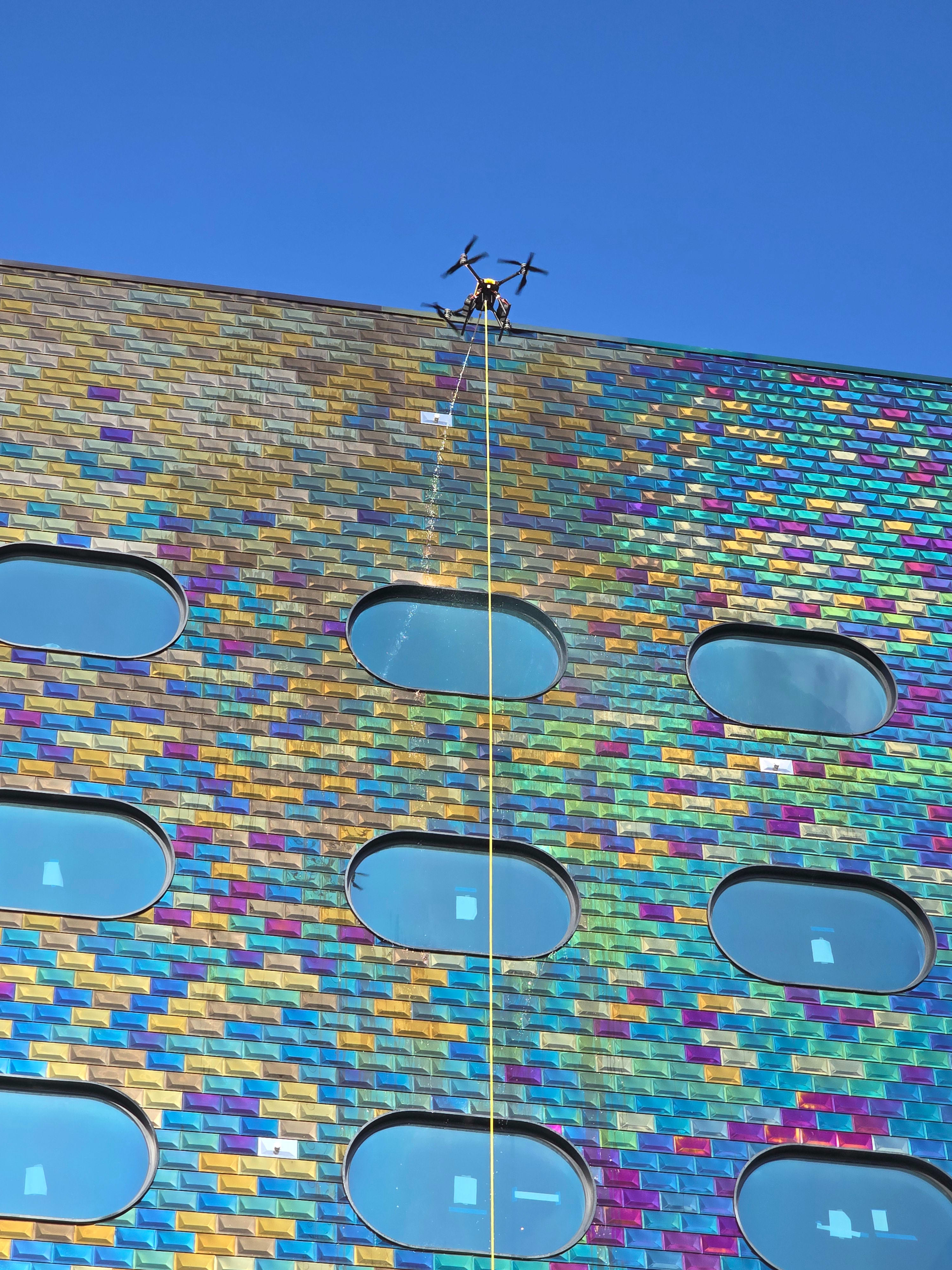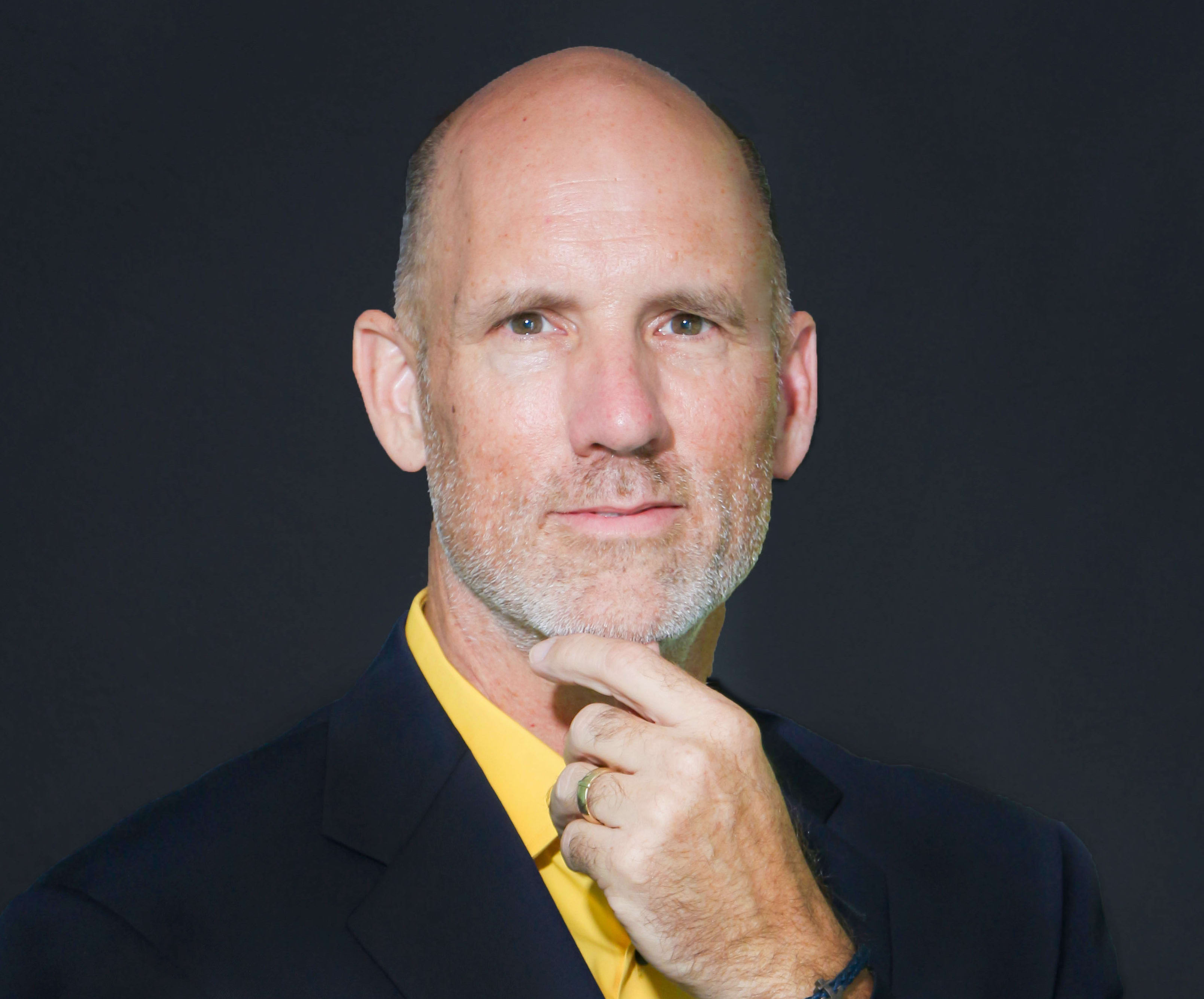Use Case -How Apellix is revolutionizing Industrial Safety
 Source: Дарья Вовкула/stock.adobe.com; generated with AI
Source: Дарья Вовкула/stock.adobe.com; generated with AI
In the last two decades, the use of drone technology has expanded from specialized, high-end aircraft to a host of commercial, recreational, and consumer applications. But while most people think of using drones—also known as uncrewed aerial vehicles (UAVs)—only for capturing spectacular aerial footage or delivering Amazon packages in urban environments, Apellix®, a manufacturer of software-controlled aerial robotic systems, is aiming higher. CEO Robert Dahlstrom and his team see opportunities to offer cost-cutting solutions to companies and even save lives.
"Any time workers—like those washing the exteriors of high rises or repainting large, above-ground tanks in the oil and gas industry—have to work in elevated locations, the risk of injury or death from falling goes way up," Dahlstrom says, "To say nothing of the risk of contamination from harmful substances that may be present at those sites."
He continues, "Anything we can do to get human beings out of those precarious positions will save lives and provide a better solution for their employers."
With this mission in mind, the Apellix team set out 10 years ago to apply drone technology to mitigate these occupational hazards, starting with pressure washing, spray painting, and non-destructive testing as their initial use cases.
Finding Solutions to Key Challenges
To mitigate these occupational hazards, Dahlstrom's team recognized the need to provide viable solutions to three key challenges: remote precision, avoiding hazards, and winning over the public.
Working with Precision on Elevated Structures
Maintaining precision while using drones to clean or paint tall buildings poses unique difficulties (Figure 1). Dahlstrom explains, "We're taking a technology that was designed to fly mostly in the open air and carry a camera and then modifying it to fly very slow and precise and close to structures."

Figure 1: An Apellix drone power-washes a building's roof and solar panels. (Source: E-DRONE Technologies, used by permission)
These use cases render many of the instruments that drones typically use for navigation, including GPS, magnetic compasses, and barometric pressure, useless. This lack of sensors posed a major barrier in use cases like spray painting, where paint needed to be applied at a uniform distance, pace, and angle.
"If you rely on only one sensor, it's going to fail at some point in time," says Dahlstrom. "One sensor—like a camera, for example—may work perfectly at a distance; but when the drone gets closer, the surface of an above-ground tank can look like just a featureless wall."
Solution
Dahlstrom's team has overcome this challenge by augmenting traditional autopilot information with robust multimodal sensors.
"Having multiple sensors on the drone is critical to making this a viable product," he explains. "Combined with our integrated circuit boards and circuit cards, and embedded software programming, Apellix's drones can reliably navigate the complexities of painting or cleaning elevated structures." It also enables them to operate with a higher degree of precision than they would if human operators piloted them.
"Human pilots can make one or two adjustments to the drone per second during the flight using a joystick or controller," says Dahlstrom. "In contrast, Apellix's drones can make 500 micro-adjustments per second with their onboard software. Even if a sudden gust hits one of our painting drones, for example, it can adjust autonomously to maintain a uniform speed and distance from the surface it's painting."
Avoiding Potential Hazards for People and Other Aircraft
Whenever someone considers flying an industrial drone into an increasingly crowded airspace, the issue of safety is bound to arise. Dahlstrom says, "The aviation administrations are always concerned about a drone getting loose or losing control, wandering into national airspace, and causing an accident."
Especially in urban areas with a higher concentration of low-elevation traffic from helicopters or other drones, the risk of accidents occurring is higher and is likely to increase as more aerial craft (e.g., drones and air taxis) are introduced.
Solution
Apellix's drones meet US Federal Aviation Administration (FAA) guidelines for small UAVs, weighing less than 24.96kg (55lb), including payload. Due to the nature of their work, the drones operate at a height of no more than 6.1m (20ft) above the structures they are servicing, ensuring they remain clear of national airspace. Second, unlike most UAVs, Apellix's drones are tethered to a base on the ground that supplies power, water, and cleaning solution to the drone, preventing it from exceeding the length of its tether (Figure 2).
 Figure 2: An Apellix drone washes a building's exterior while tethered to a base station. (Source: Wash Me Fly, used by permission)
Figure 2: An Apellix drone washes a building's exterior while tethered to a base station. (Source: Wash Me Fly, used by permission)
The drones' multimodal sensors and computer programming offer precision and autonomy that enable them to react to and avoid threats in real time. "If a drone is getting too close to something, [it will back] up or avoid colliding with it," explains Dahlstrom. "If a drone sees that its battery is low while it's in the air, it will automatically take action to put itself on the ground before the batteries run out. This introduces a level of safety and reactivity that surpasses that of other drones and piloted aircraft."
Alleviating Public Trepidation Toward Drones
Naturally, even as drones have become more commonplace, members of the public still experience some trepidation on the subject, primarily due to the safety concerns mentioned above and the sheer novelty of the technology. "It's always the case where, when new technology comes out, it's scary," says Dahlstrom. "It's change, and people don't like change."
Unfortunately, this fear can also lead to public outcries to ban drones from specific spaces, preventing communities from benefiting from the technology.
Solution
For Dahlstrom, the cure for such trepidation lies in familiarity with the technology and the benefits it can provide to individuals, communities, and businesses.
"One of our clients, an industrial cleaner, used to take two days to clean a single above-ground storage tank out of over 200 tanks," he explains. "Now they can use Apellix's drones to clean a tank in just four hours, translating to more business for them and US$2 million in savings for their customer. As more people see the value and safety these drones provide—on local buildings, at their workplaces, and in their communities—we are already seeing them warm up to this technology."
Enabling Innovation Through Strong Partnerships
Behind Apellix's ability to deliver such advanced solutions is a network of strategic partners that support rapid development and deployment. One such partner is Mouser Electronics, a key distributor for the components Apellix relies on.
"Mouser's outstanding commitment to rapid innovation, product availability, and global service excellence has been helpful to Apellix's ability to bring cutting-edge solutions to market quickly," says Dahlstrom. "Their reliable supply chain and deep technical resources make Mouser a great distributor and source for electronic and other components we require."
This support helps Apellix stay focused on what they do best: engineering smarter, safer solutions for working at height.
Conclusion
For Dahlstrom and his team, the future is bright for Apellix's drones, with potential applications in structural repair, emergency response, providing more detailed structural data for smart cities and paint manufacturers, improving public infrastructure maintenance, and even cleanup after a chemical or radiological incident."
Apellix's drones are saving lives," Dahlstrom says. "They offer an alternative that is faster, safer, and cheaper than the traditional way. That makes them an amazing advance for humankind that we are just thrilled to be a part of."
 Robert Dahlstrom holds seven US patents; has received numerousengineering, invention, and teaching awards; has published over 50 papers and articles; has spoken at multiple conferences and events; and has appeared in numerous podcasts and webinars. Dahlstrom is the founder and CEO of Apellix, which provides software-driven aerial robotic platforms to paint, coat, clean, and test in situations where, until now, humans have done the work at physical risk to themselves. He has been called the "father" of Working Drones: drones that do more than take photos and modify the physical environment.
Robert Dahlstrom holds seven US patents; has received numerousengineering, invention, and teaching awards; has published over 50 papers and articles; has spoken at multiple conferences and events; and has appeared in numerous podcasts and webinars. Dahlstrom is the founder and CEO of Apellix, which provides software-driven aerial robotic platforms to paint, coat, clean, and test in situations where, until now, humans have done the work at physical risk to themselves. He has been called the "father" of Working Drones: drones that do more than take photos and modify the physical environment.
Before Apellix, Dahlstrom founded a software company, was a full-time faculty member at Florida State University, worked for the Florida Legislature, and worked in a clean room at AT&T Microelectronics. He has an MBA from Florida State University and a BS from California State University, East Bay.